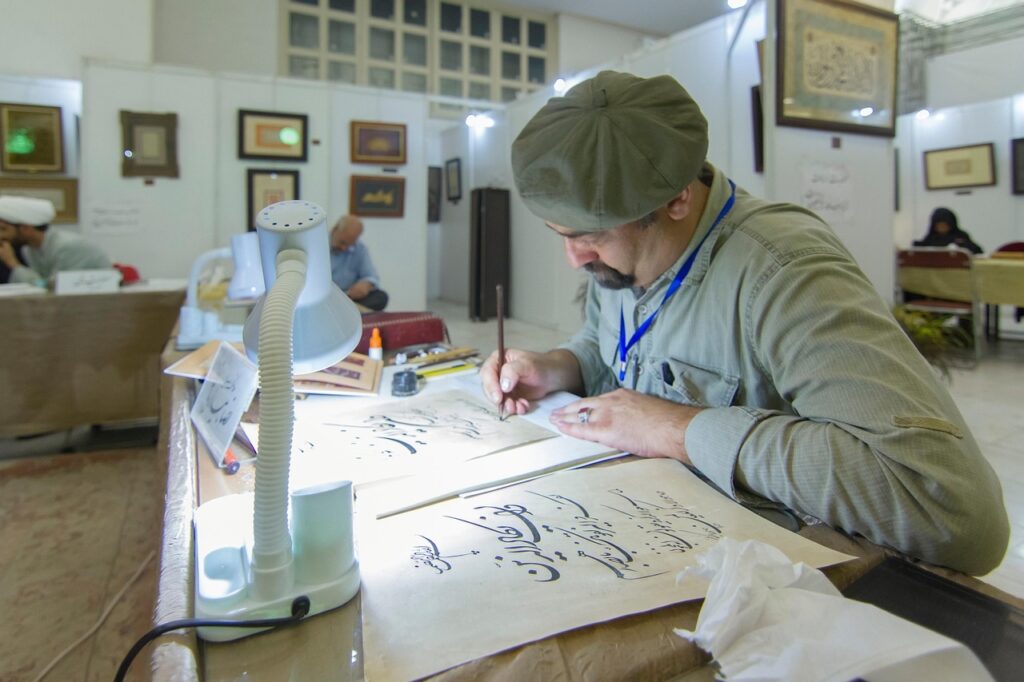In the vast and intricate tapestry of global heritage, Persian culture stands as one of the most enduring, sophisticated, and artistically rich civilizations in human history. From the monumental poetry of Hafez and Rumi to the mesmerizing architecture of Isfahan and the subtle brushstrokes of miniature painting, Persian art has always embodied a blend of the spiritual and the sensual, the poetic and the philosophical. At the heart of this cultural radiance stands a concept both ancient and deeply evocative: Negahestan.
The word “Negahestan”, derived from the Persian root negah (meaning “look” or “gaze”) and the suffix -stan (denoting a place), loosely translates to “a place of contemplation” or “a garden of visions.” In many classical contexts, it refers to a gallery, a cultural sanctuary, or a curated space that encapsulates the soul of Persian aesthetics. Today, Negahestan is reemerging as a modern expression of Iran’s timeless artistic legacy—both a literal space and a symbolic reminder of the enduring spirit of Persian art.
The Roots of Negahestan: A Cultural Garden
In Persian tradition, gardens (or pardis, the root of the English word “paradise”) symbolize a microcosm of order, harmony, and divine beauty. Similarly, Negahestan was often imagined as a “garden of images”—a space where visual art, literature, calligraphy, and architecture converged. These were not just physical spaces but philosophical constructs, where art was not merely for aesthetic pleasure but also a spiritual and intellectual experience.
In historical Iran, Negahestans appeared as:
-
Royal art collections housed in palaces
-
Illustrated manuscripts preserved in libraries
-
Private salons of poets, philosophers, and painters
-
Public bazaars where artisans and miniaturists sold their works
Whether in the geometric lines of a mosque dome or the fluid curves of Nastaliq script, the Persian aesthetic in Negahestan was a celebration of balance, metaphor, and cosmic rhythm.
Persian Art: A Multidisciplinary Symphony
The timelessness of Negahestan lies in how it reflects the multidimensional nature of Persian art. Iranian culture has never compartmentalized creativity. Instead, disciplines interact freely, and art is seen as a universal expression of the divine.
1. Miniature Painting
One of the crowning jewels of Negahestan is Persian miniature painting—delicate, highly detailed works that often illustrated epic tales like Ferdowsi’s Shahnameh or mystical poems like those of Attar. These were not only artistic masterpieces but visual portals into the literary and spiritual heart of Iran. The colors were vibrant yet restrained, the figures symbolic rather than realistic, and the scenes a delicate interplay between fantasy and reality.
2. Calligraphy
In the world of Persian art, calligraphy is painting with words. Styles like Nastaliq elevated written language to pure visual poetry. In the Negahestan tradition, calligraphy was more than decoration; it was a spiritual discipline, where the act of writing became a form of prayer and meditation.
3. Architecture
Architecture in Persian culture is inseparable from its visual philosophy. From the muqarnas domes of Yazd to the tiled mosaics of Shiraz, every element is governed by mathematical precision and mystical symbolism. In many ways, the great mosques and caravanserais of Iran were the largest Negahestans ever built—living galleries of light, geometry, and sacred inscription.
4. Textile and Ceramic Arts
Carpet weaving and ceramic design are other art forms deeply tied to Negahestan’s ideals. Persian carpets, with their intricate patterns and natural dyes, often mimic garden layouts or cosmological diagrams. Ceramics, with their floral motifs and Quranic inscriptions, bring beauty into daily life, making art an everyday experience.
Negahestan in Literature and Poetry
Negahestan is not limited to visual culture. Persian poetry has long served as the literary counterpart to its visual arts, both mediums steeped in metaphor, mysticism, and aesthetic precision.
Poets like Saadi, Rumi, Hafez, and Omar Khayyam wrote verses that mirrored the elegance of miniature painting—layered, luminous, and steeped in spiritual meaning. In many manuscripts, verses would literally be woven into the visuals, with illuminated margins and delicate calligraphy enhancing the written word.
The Negahestan of poetry is a space of introspection, love, longing, and illumination. Each couplet is a window, each ghazal a gallery.
Reviving Negahestan: A Modern Cultural Movement
In recent years, Negahestan has re-emerged as both a movement and a mindset, championed by scholars, artists, and cultural institutions. As Iran faces the challenges of globalization, censorship, and political tension, many artists are looking to their roots—not for nostalgia, but as a foundation for contemporary expression.
New-age Negahestans are appearing in various forms:
-
Digital galleries and websites showcasing Iranian artists to a global audience
-
Curated exhibitions in Europe, North America, and Asia that spotlight Persian classical art
-
Fusion projects blending traditional Persian motifs with modern media, music, and fashion
-
Online archives and virtual museums preserving centuries of Persian artistic heritage
This resurgence is not limited to Iran. The Persian diaspora—spread across the globe—is playing a key role in reinterpreting Negahestan for the modern age, bridging ancient aesthetics with modern sensibilities.
The Philosophy Behind Negahestan
At the heart of Negahestan is a deeply humanistic philosophy. It sees art not merely as a product, but as a reflection of inner beauty, order, and truth. In this sense, Negahestan is both a cultural institution and a spiritual metaphor. It reminds us that beauty is not just to be seen but to be contemplated. That culture is not static, but alive.
This philosophy aligns closely with Sufi traditions, where the act of looking (negah) becomes an act of seeing beyond the surface—into the essence of things. Thus, a painting is not just pigment on paper; it is a mirror. A verse is not just sound; it is a vessel of wisdom.
Challenges in Preserving Negahestan
Despite its timeless appeal, the preservation of Persian art faces numerous challenges:
-
Censorship and political control of artistic expression in contemporary Iran
-
Lack of investment in heritage preservation and restoration of historical sites
-
Smuggling and illegal sale of Persian artifacts and manuscripts
-
Global ignorance or misrepresentation of Iranian culture in mainstream media
In response, both grassroots movements and international collaborations are rising to protect and promote Persian art. Online platforms like Negahestan.com, art foundations, and diaspora-led exhibitions are becoming crucial players in this cultural renaissance.
A Legacy for the World
What makes Negahestan more than just a cultural heritage of Iran is its universal resonance. In a world fractured by division, fast-paced consumption, and superficiality, Negahestan invites us to pause, gaze, and contemplate. It offers a model of art that is not only beautiful but meaningful. Not only ancient but urgently modern.
From the delicate petal of a Persian miniature to the majestic arches of ancient architecture, the vision of Negahestan continues to shine—quietly, gracefully, and powerfully—across time and borders.
Final Thoughts
Negahestan is not just a place. It is a perspective. A way of seeing the world where art is a language of the soul, and culture a garden of eternal blooming.
In celebrating Negahestan, we are not only honoring Iran’s artistic past—we are also planting seeds for its creative future. For those who seek beauty, wisdom, and wonder, Negahestan offers a timeless path, forever vibrant and eternally relevant.






